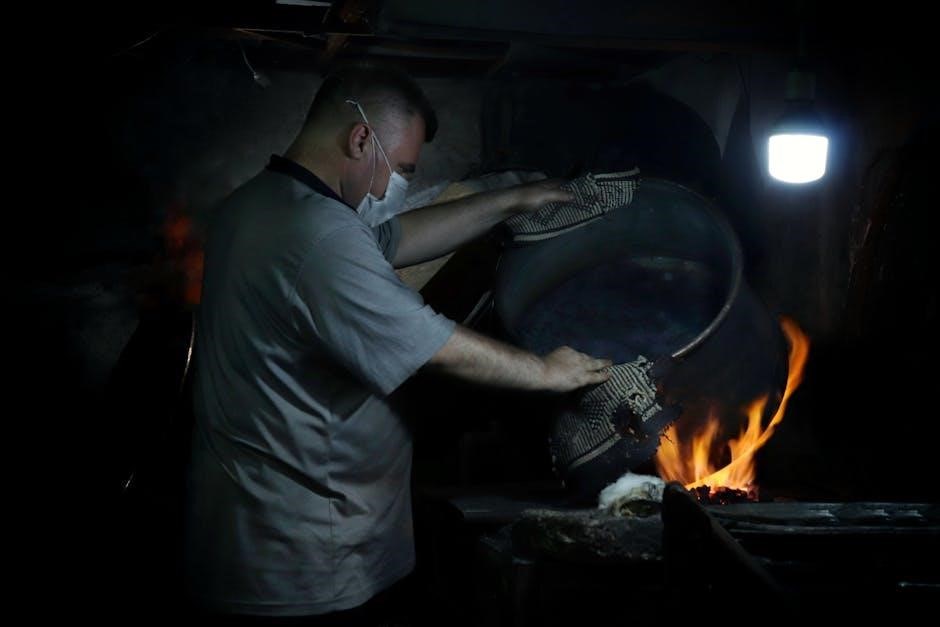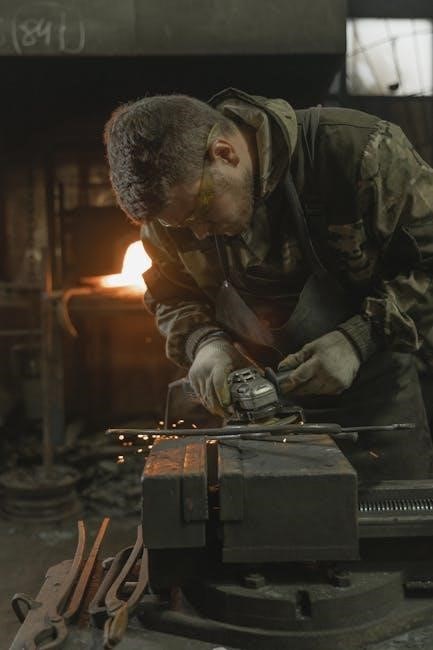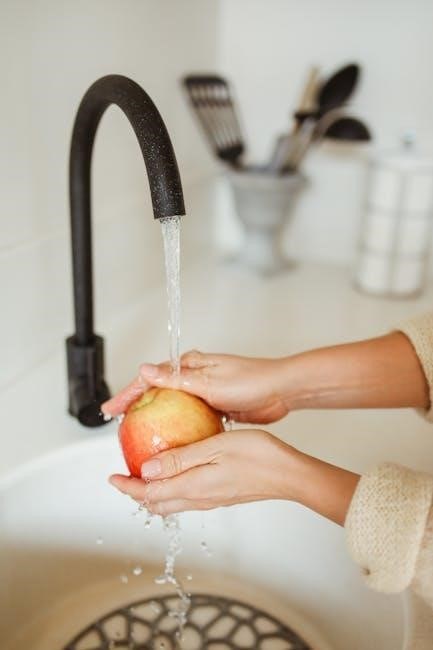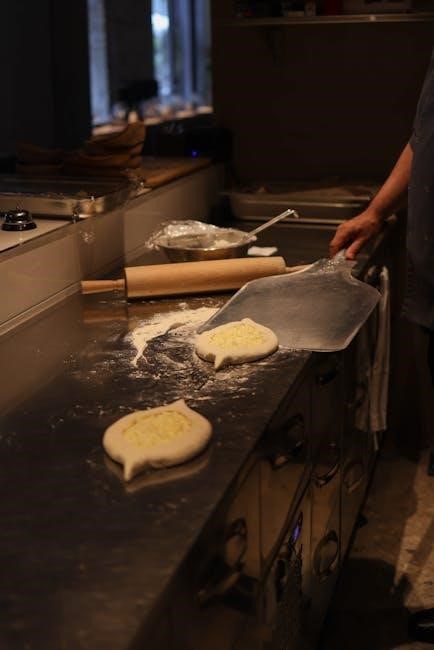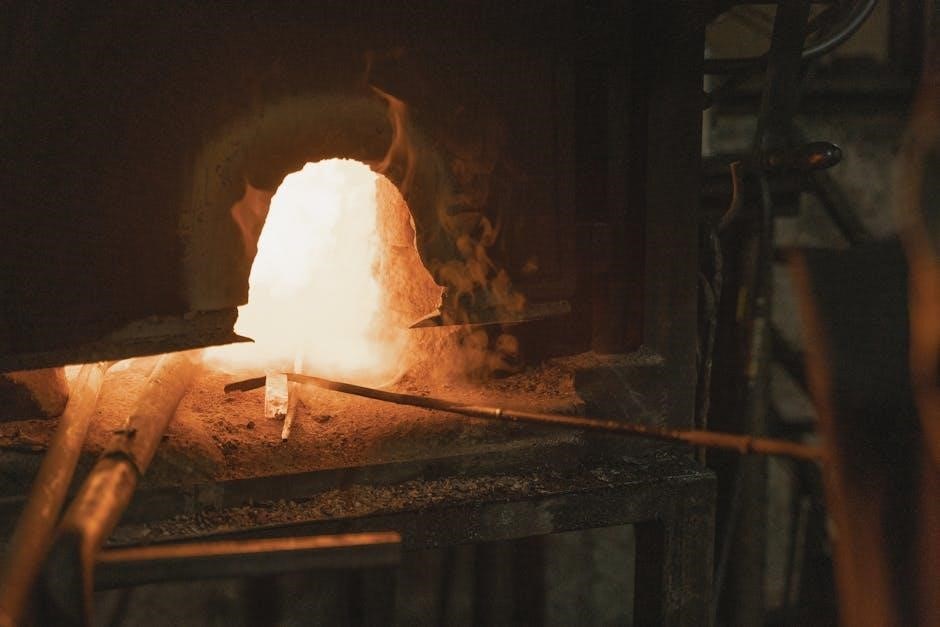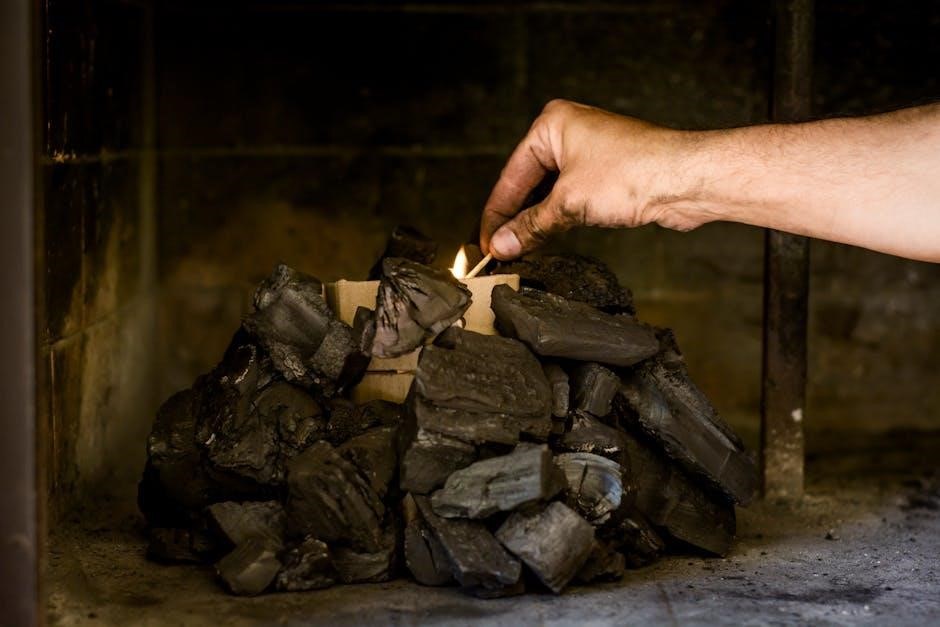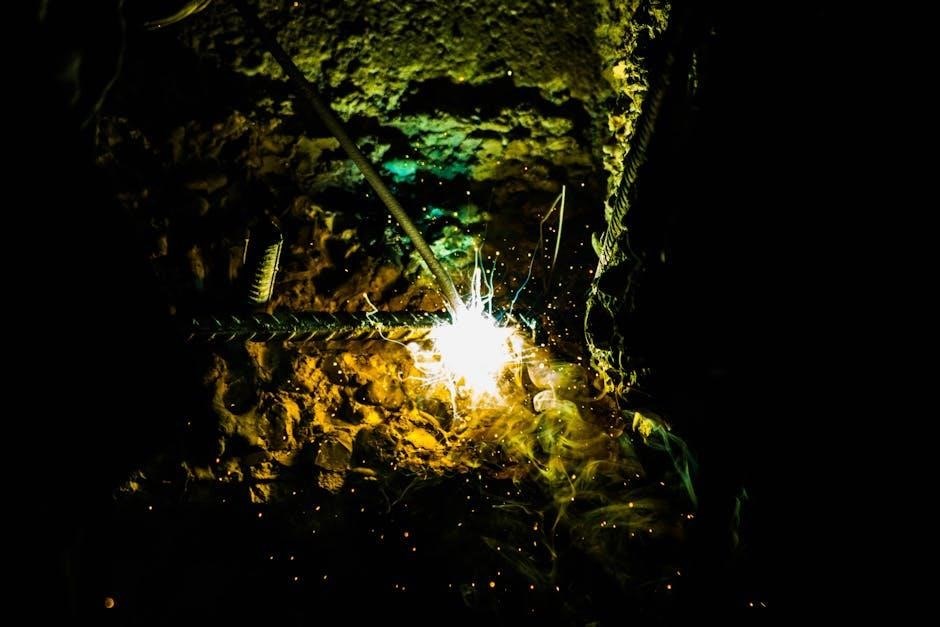printable knot tying guide pdf
Discover the world of knot tying with our printable guides!
Master essential knots for various activities like camping and sailing.
Download easy-to-follow instructions and illustrations to learn at your own pace.
Perfect for beginners, these guides offer a practical approach to knot tying.
Essential Knots for Beginners
Embark on your knot-tying journey with these fundamental knots!
Learn the bowline, square knot, and clove hitch for versatile applications.
Our printable guides provide clear, step-by-step instructions for easy mastery.
These essential knots are a must-know for any outdoor enthusiast.
Bowline Knot: The King of Knots
The bowline knot, often called the “King of Knots,” is an essential skill for anyone venturing outdoors.
It’s renowned for creating a secure, fixed loop at the end of a rope, proving invaluable in various situations.
Our printable knot tying guides offer clear instructions on mastering this reliable knot.
Easy to tie and untie, the bowline is a time-tested knot that every outdoors person should know.
The Bowline is also one of the four basic maritime knots, the other three are the Figure-Eight Knot, the Reef Knot and the Clove Hitch.
It is a strong, reliable and stable knot, sometimes even referred to as the King of Knots.
The Rabbit comes out of the hole … (a) Purpose: To be used as a safety knot. (b) Tying the Knot: Take the running end of the rope and form a loop. Place the running end through the loop.
Download our guides today and learn to confidently tie this crucial knot for any adventure.
Considered one of the most essential knots.
So called “The King of Knots”.
Master this knot now with our printable guides!
Square Knot: Tying Two Ropes Together
The square knot is designed for joining two ropes of similar diameter.
It’s a fundamental knot, often used in first aid and everyday situations where securely connecting ropes is necessary.
Our printable knot tying guides provide step-by-step instructions, making it easy to learn and remember how to tie a perfect square knot.
Mastering this knot is essential for various craft projects, for instance tying bandanas, macramé, etc.
Square knots slip when you tie them with nylon rope. A square knot will also slip if it is not under tension.
Our guide provides essential safety information too.
It is useful in many situations and should be a staple in your knot-tying arsenal.
With our guide, you will master this knot!
Square Knot Instructions: Remember this…
Download our printable guide now!
Practice tying the perfect square knot.
Clove Hitch: A Useful Hitch for Various Purposes
The clove hitch is a versatile knot primarily used for attaching a rope to a pole, post, or ring.
It’s valued for its simplicity and ease of tying, making it a go-to knot in various scenarios.
Our printable knot tying guides provide clear, step-by-step instructions on how to create a secure clove hitch.
With our guide, you will master this knot!
Learn to use this hitch for camping, boating, and securing loads.
The clove hitch is a quick and reliable knot for temporary fastening.
Our downloadable PDF makes learning this knot accessible and convenient.
Practice tying the clove hitch with our detailed diagrams.
Whether you’re a beginner or experienced, our guide offers valuable insights.
Download now and enhance your knot-tying skills.
Master the clove hitch and be prepared for any situation.
The clove hitch is a quick and reliable knot for temporary fastening.
The clove hitch is a quick and reliable knot for temporary fastening.
Types of Knots and Their Uses
Explore various knots and their practical applications.
Our printable guides cover knots for camping, sailing, and fishing.
Learn which knot suits each specific task effectively;
Enhance your skills and knowledge today!
Knots for Camping and Outdoor Activities
When venturing into the great outdoors, a solid understanding of essential knots is paramount for safety and efficiency. Our printable knot tying guides offer comprehensive instructions on knots specifically tailored for camping and various outdoor activities. These knots are crucial for securing tents, creating makeshift shelters, hanging food to protect it from wildlife, and even for first aid situations.
For camping, learn the versatile taut-line hitch to adjust tent lines easily, ensuring your shelter remains secure in fluctuating weather conditions. The timber hitch is invaluable for dragging logs or securing firewood. If you’re setting up a bear bag, master the art of the counter hitch to hoist your food safely away from curious critters.
Beyond the campsite, these knot-tying skills can prove invaluable for hiking, climbing, and other outdoor pursuits. Learn to tie a bowline, a reliable knot for creating a fixed loop, perfect for rescue scenarios or securing gear to a fixed point. The figure-eight knot is also a valuable knot.
Knots for Sailing and Boating
Embarking on a sailing or boating adventure requires a specialized set of knot-tying skills to ensure safety and efficient operation. Our printable knot tying guides offer detailed instructions on essential knots specifically designed for maritime use. From securing lines to mooring, to adjusting sails, these knots are fundamental for any sailor or boater.
The bowline knot, often hailed as the “King of Knots,” is a staple for creating a reliable loop at the end of a rope, crucial for mooring and attaching lines to cleats. The clove hitch provides a secure way to fasten a rope to a post or rail, while the figure-eight knot serves as a stopper knot, preventing lines from running out of blocks or fairleads.
For sail handling, learn to tie a reef knot (also known as a square knot) for reefing sails and the sheet bend for joining two ropes of different sizes. Mastering these knots will enable you to navigate the waters with confidence and competence, ensuring a safe and enjoyable experience on board.
Knots for Fishing
Anglers rely on a variety of specialized knots to ensure their lines hold strong and their lures are securely attached. Our printable knot tying guides provide clear, step-by-step instructions for mastering the essential knots for fishing. These knots are designed to maintain line strength and prevent slippage, crucial for landing that prized catch.
The improved clinch knot is a popular choice for attaching fishing line to hooks, swivels, and lures, offering a reliable and sturdy connection. The Palomar knot is known for its exceptional strength and is ideal for braided lines. For tying leaders, the blood knot creates a smooth and secure connection between two lines of similar diameter.
Learn to tie the surgeon’s loop for creating loops in your leader for attaching droppers or flies. With our comprehensive guides, you can confidently tie these knots, ensuring your fishing gear is ready for any situation on the water. Perfect your technique and increase your chances of success with our easy-to-follow instructions.

Macrame Knots for Beginners
Macrame, the art of knotting cords to create decorative patterns, is a fantastic craft for beginners. Our printable knot tying guides offer a simple and accessible introduction to the world of macrame. Learn to create beautiful wall hangings, plant hangers, and more with our easy-to-follow instructions.
The square knot is the foundation of many macrame projects, providing a stable and versatile base for intricate designs. The half knot creates a spiral pattern, adding texture and visual interest to your creations. Discover how to use lark’s head knots to attach cords to a dowel or ring, forming the starting point for your macrame piece.
Our guides include detailed diagrams and step-by-step instructions, ensuring you can master these essential knots with ease. Explore different cord types and experiment with various knot combinations to create your own unique macrame designs. With our help, you’ll be knotting like a pro in no time! Unlock your creative potential and dive into the rewarding world of macrame.
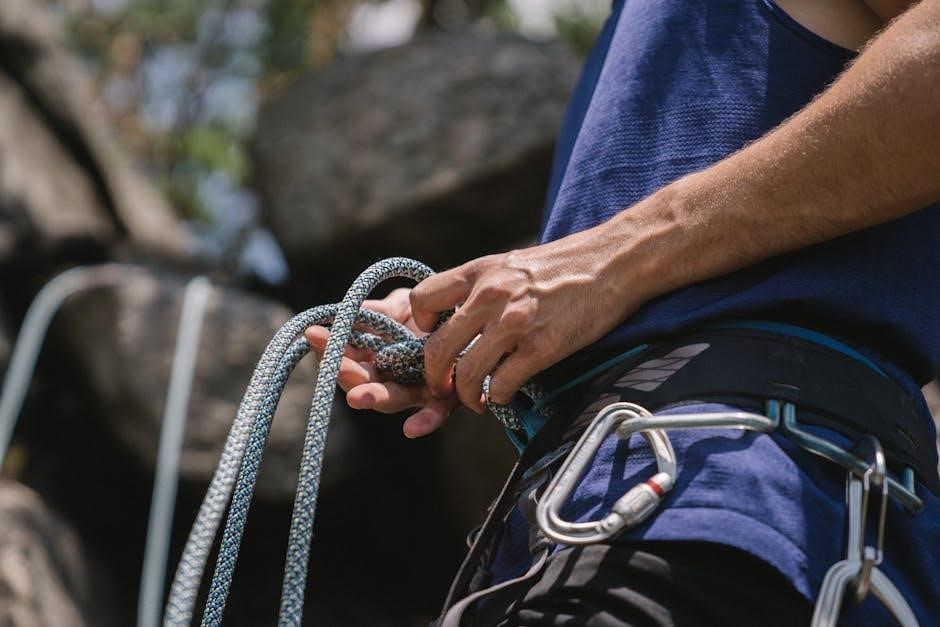
Understanding Knot Tying Terminology
Grasp the lingo!
Learn ‘working end’ vs. ‘tail end’.
Understand terms for confident knot tying.
Master the language of knots.
Working End vs. Tail End
Navigating the world of knot tying requires understanding fundamental terminology.
Two critical terms are the “working end” and the “tail end” of a rope.
The working end is the active part you manipulate to form the knot.
It’s the end you’re actively using to tie, weave, and secure the knot.
In contrast, the tail end, also known as the “standing end,” is the inactive portion.
The tail end simply provides additional length for the knot.
Identifying these parts is crucial for following instructions.
Confusing them can lead to incorrectly tied knots.
Imagine the working end as the “artist” creating the knot.
The tail end serves as the “canvas” that the knot is tied around.
Remember, the tail end should always be long enough.
It should provide a safe margin.
This ensures that the knot won’t unravel under tension.
Mastering these terms is essential for knot tying success.
Good luck!
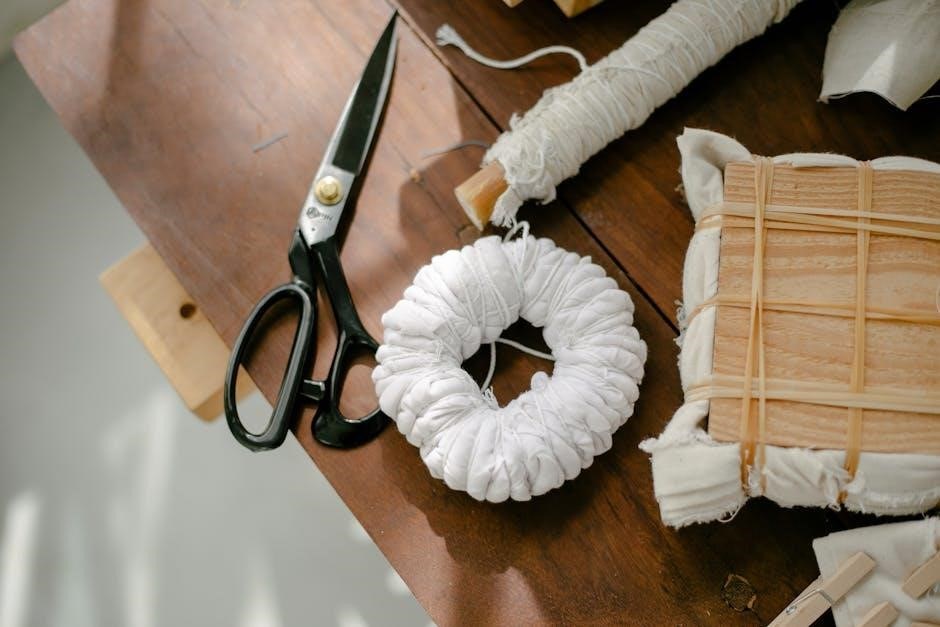
Tips for Successful Knot Tying
To tie knots successfully, practice regularly and use clear instructions.
Pay attention to details and ensure knots are properly dressed and set.
Tighten knots carefully to secure them effectively.
Tie, Dress, and Set
The “Tie, Dress, and Set” method is crucial for creating reliable and neat knots. These three steps are essential for ensuring that your knot functions as intended and remains secure under pressure. First, “Tie” the knot according to the instructions, carefully following each step to form the basic structure. Next, “Dress” the knot by arranging the strands so they lie neatly and correctly. This involves removing any twists or crossings that might weaken the knot or cause it to jam. A well-dressed knot looks symmetrical and organized. Finally, “Set” the knot by gradually tightening it. This process ensures that all parts of the knot are properly seated and that it will hold firmly. Avoid jerking the knot tight, as this can damage the rope fibers and reduce the knot’s strength. Each step is vital for a safe, functional knot.
Safety Considerations When Tying Knots
When tying knots, safety should always be the top priority. Regularly check your knots, and retie them often, especially if they are subjected to significant stress or adverse conditions. Always use the appropriate knot for the task at hand; a wrongly chosen knot can fail under pressure. Inspect your ropes for wear and tear before each use, and replace any damaged ropes immediately. Be aware that certain materials, like nylon, can cause knots to slip if not properly secured. Ensure knots are tied correctly, following instructions carefully, and practice tying them until you can confidently execute them under various circumstances. Avoid tying knots in adverse conditions where your attention might be compromised. After tying, double-check that the knot is properly dressed and set to prevent slippage or failure. Understanding these safety precautions is crucial for preventing accidents and ensuring the reliable performance of your knots in any situation.

Where to Find Printable Knot Tying Guides
Finding reliable printable knot tying guides is easier than ever with numerous online resources. Many websites offer free PDF downloads with detailed instructions and illustrations for various knots. Start by searching online for terms like “printable knot tying guide PDF” or “knot tying manual download” to discover a wealth of options. Websites dedicated to outdoor activities such as camping, sailing, fishing, and climbing often provide specialized knot guides tailored to those specific needs. Online marketplaces and crafting sites also offer printable guides, some of which may focus on macrame or decorative knots. Look for guides that include step-by-step photos or diagrams to ensure clarity and ease of understanding. Before downloading, check reviews or ratings to ensure the guide’s accuracy and user-friendliness. Always download from reputable sources to avoid potentially harmful files. With a little searching, you can find the perfect printable guide to suit your knot tying needs.



